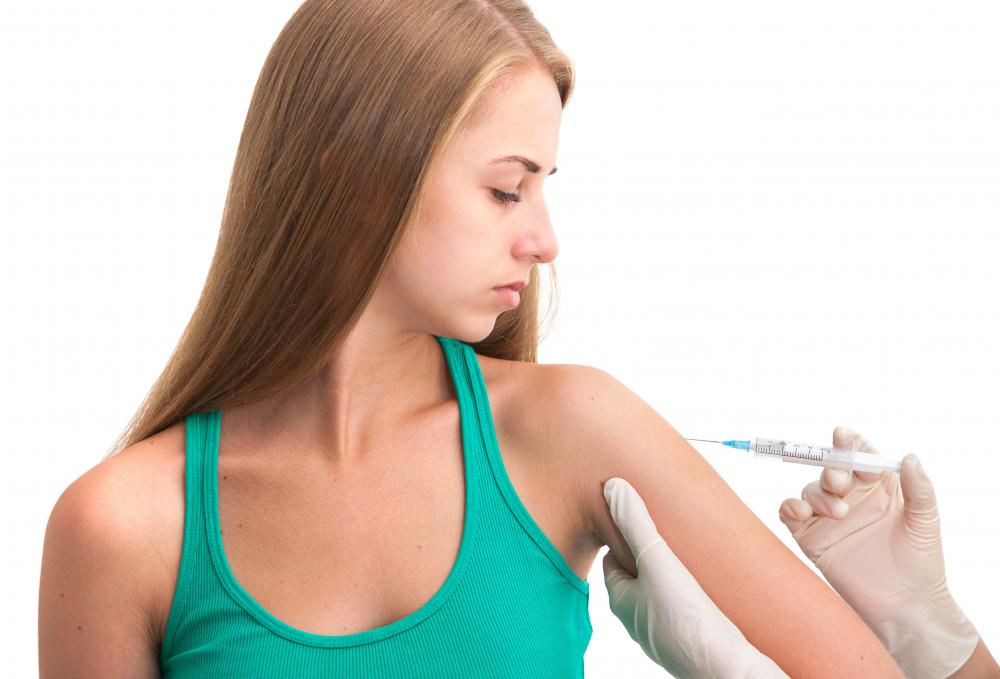At WiseGEEK, we're committed to delivering accurate, trustworthy information. Our expert-authored content is rigorously fact-checked and sourced from credible authorities. Discover how we uphold the highest standards in providing you with reliable knowledge.
What is Human Papillomavirus?
Out of all of the sexually transmitted infections, human papillomavirus (HPV) is the most prevalent. According to the United States' Centers for Disease Control and Prevention, half of all people who are sexually active will contract the virus at some point. It is primarily passed through genital-to-genital contact but also can be transmitted through oral sex.
There are more than 100 types of papillomaviruses, and most strains cause no noticeable problems. Most people who have human papillomavirus will not experience any symptoms, but those with certain low-risk strains might develop genital warts or even warts in the throat. These warts first appear as small bumps or groups of bumps, and they can appear within weeks or months of contracting the virus.

Individuals who have a high-risk strain of the virus could develop cancer of the cervix, vulva, anus or penis. Human papillomavirus is responsible the majority of cervical cancer cases. The Centers for Disease Control and Prevention state that, each year in the United States, 12,000 women get cervical cancer.
As of 2010, there was no test readily available to determine whether or not one has human papillomavirus. For women, there is one test that is used to follow up after an abnormal Pap test result that can identify some of the high-risk, cancer-causing strains of the virus. There is no diagnostic test for men, so many might have no idea that they have it.

Human papillomavirus does not have a cure, but those with the wart-causing strains can have the lesions treated or removed. There also are some external medications to treat genital warts. For women who have the cancer-causing strains, screening in the form of Pap tests and pelvic exams can help identify infection so that any issues can be treated early. Cervical cancer is highly treatable when detected early, or in pre-cancerous stages. In many cases, treatment is unnecessary, because the immune system might clear the infection within one or two years.

Prevention and screening are crucial when it comes to human papillomavirus. As of 2010, there were two vaccines available for females to protect against the virus. One vaccine, Gardasil®, protects against both low-risk and high-risk strains. Gardasil® also can be given to males. Condoms might also lower the risk of virus transmission, but the virus still could infect areas not covered by a condom.

One of the biggest risk factors for contracting human papillomavirus is having many sexual partners. However, even an individual who has only one sexual partner in his or her lifetime can still contract the virus. The only absolute way to avoid the virus is to abstain from all sexual contact.
AS FEATURED ON:
AS FEATURED ON:















Discussion Comments
The human papillomavirus vaccine can be given to adolescents to prevent catching human papillomaviruses that cause genital warts thought to lead to cancer. The shots are typically given to children ages 11-12. The preteens are supposed to take three doses in about six months for full immunity.
Post your comments